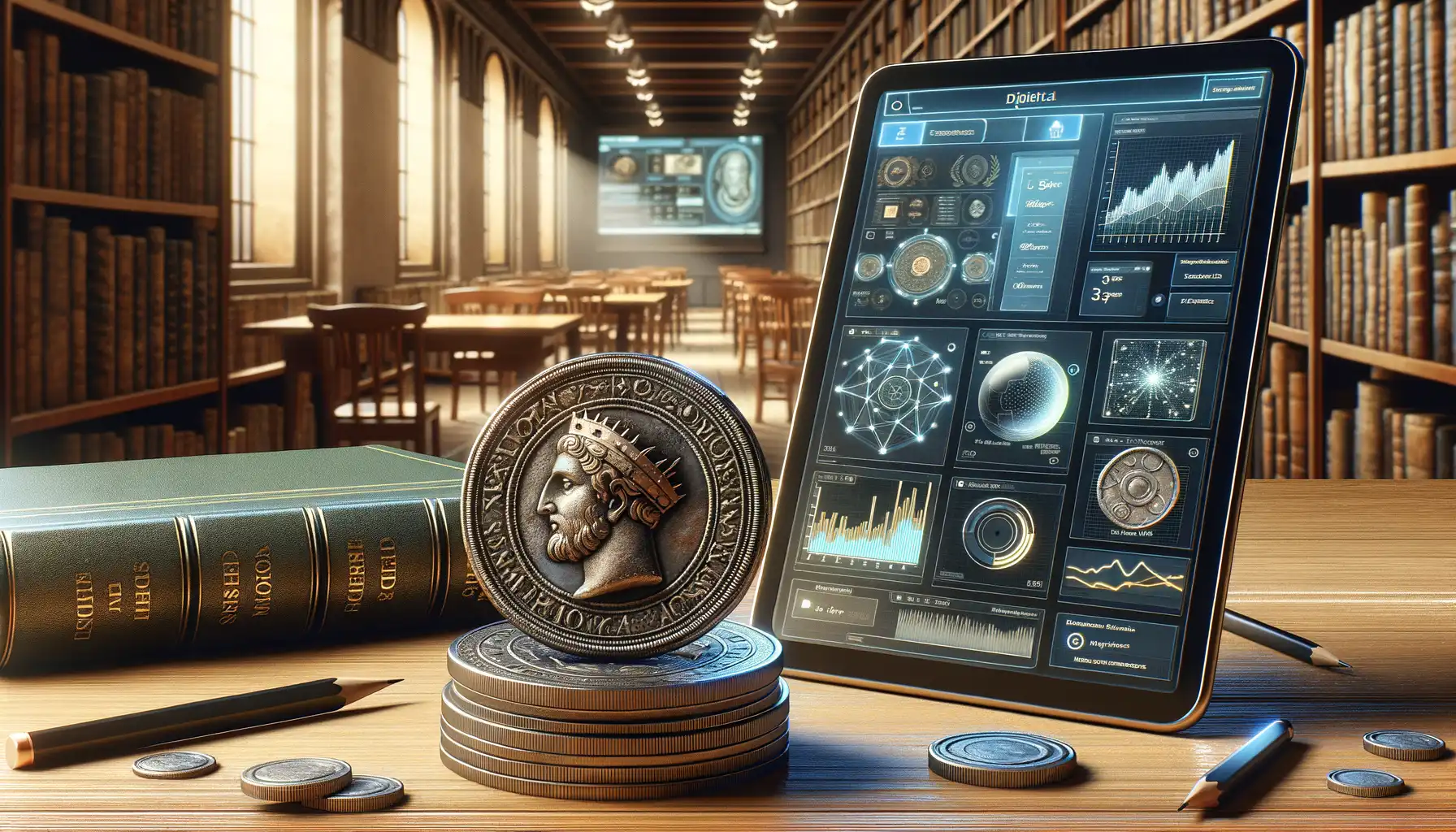Introduction to Digital Archives in Numismatics
Where History Meets the Digital Era
Step into the world of numismatics, where coins, tokens, and banknotes whisper stories of empires, revolutions, and trade routes. Now imagine those whispers amplified into a powerful symphony—courtesy of digital archives. These archives aren’t just virtual filing cabinets; they’re treasure maps guiding researchers, collectors, and enthusiasts through vast troves of historical currency data.
Gone are the days of poring over dusty tomes in dimly lit libraries. Today, with a few clicks and keystrokes, you can explore high-resolution images of rare coins, detailed minting records, and even video walkthroughs of ancient coin hoards. It’s like time-travel, but without the DeLorean.
- Want to compare 17th-century French ecus? There’s an archive for that.
- Curious about Ottoman coins minted during the height of their empire? Yup, it’s online.
- Need to trace the origins of a specific coin in your collection? Digital tools have got your back.
But these archives don’t just preserve—they curate. Thanks to meticulous tagging, cross-referencing, and cataloging, navigating their labyrinth becomes an intuitive experience. They’re not just resources; they’re companions on your journey into the past.
Benefits of Digital Archives for Researchers

Unlocking a World of Coins at Your Fingertips
Imagine holding centuries of numismatic history in the palm of your hand. With digital archives, that dream becomes reality. No more booking flights to distant libraries or wading through dusty shelves. Instead, researchers gain instant access to an unparalleled wealth of coinage knowledge from the comfort of their desks—or even their favorite coffee shop. It’s like having a treasure chest that never runs out of gold.
What makes this so transformative? Digital archives break down barriers:
- High-resolution images: Zoom into every intricate detail of ancient coins, from inscriptions to worn edges, as though you’re examining them under a magnifying glass.
- Searchable metadata: Looking for rare coins from the Ptolemaic Kingdom? A few clicks, and voilà—your findings are ready.
- 24/7 availability: Researching at midnight? No problem. These resources never close.
A Community of Shared Passion
Perhaps the most unexpected benefit of digital archives is their ability to connect people. Through online collaborations, forums, and shared datasets, researchers around the world join forces, discovering patterns and solving mysteries together. One day you’re analyzing a Roman denarius; the next, you’re swapping theories with a historian three countries away. With digital tools, solitary work transforms into teamwork. And isn’t that what drives progress—human connection propelled by innovation?
Challenges Faced in Utilizing Digital Archives

Unraveling the Complex Maze of Accessibility
Imagine diving into a digital archive with the excitement of a treasure hunter, only to find that the map is written in a language you don’t understand. For many numismatic researchers, this is reality. While digital archives promise an ocean of information, navigating them can feel like steering a ship through dense fog.
One major hurdle? Inconsistent search interfaces. Each archive seems to have its own rules and quirks—some demand precise keywords, others call for specific formatting, and a few seem to play hard-to-get no matter how thoughtfully you approach them. It’s not uncommon to spend hours trying to unearth a coin’s historical lineage, only to abandon the search out of frustration.
And then there’s the challenge of fragmented data. Often, vital details are scattered across multiple platforms. Picture chasing down a rare 17th-century coin—it’s exhilarating until you realize one archive has the mint year, another the engraver’s name, and yet another the political context. The puzzle feels endless.
- Outdated formats: Many archives still rely on PDFs or scanned images with no searchable text.
- Paywalls: Some collections dangle priceless resources but keep them locked behind expensive subscriptions.
The journey to seamless digital archiving still grapples with these messy realities—but isn’t that half the thrill of the chase?
Key Case Studies in Digital Numismatic Archives

Unveiling the Power of Collaboration: The ANS Digital Library
Step into the story of the American Numismatic Society (ANS) Digital Library, where history meets cutting-edge technology. Imagine holding ancient coins in your hands—not physically, but through a digital archive that feels so vivid it might as well be magic. The ANS has transformed dusty tomes and aging manuscripts into an online treasure chest, offering free access to thousands of numismatic works.
One standout feature? Their incorporation of OCR (Optical Character Recognition). This wizard-like tool deciphers centuries-old script, making handwritten notes from coin dealers and researchers searchable in mere seconds. It’s a giant leap for accessibility, letting you discover patterns, historical contexts, or even hidden gems that once required endless hours of manual digging.
- Cross-referencing made easy: Link a coin description directly to auction records or museum databases.
- Global collaboration: Researchers on opposite sides of the world can now connect over shared discoveries.
It’s not just a library; it’s a bridge between the past and the future—a place where anyone, from novice collectors to seasoned scholars, can uncover stories long buried in time.
The Coins That Taught Us: The British Museum’s Online Collection
Picture yourself exploring Ancient Greece or the Roman Empire, all while sitting at your desk. That’s the experience offered by the British Museum’s vast online numismatic collection. With over 600,000 objects digitized, including jaw-dropping rarities, this archive is a feast for history lovers.
Their interactive zoom and high-resolution imagery feature allow you to inspect every indent, scratch, and symbol on a coin as if it were right there in your hands. One user wrote that the detail was so precise, they felt like an archaeologist dusting off relics.
Even better? The museum incorporates detailed metadata—maps, historical timelines, and mint locations that weave coins into their broader historical fabric. From Caesar’s denarii to medieval silver pennies, it’s not just research; it’s immersive storytelling.
For educators, collectors, or curious minds, the British Museum’s system proves that digital archives aren’t just tools—they’re gateways to understanding how civilizations once lived, traded, and thrived.
Future Trends and Innovations in Digital Numismatics

Revolutionizing How Collectors and Scholars Explore Coins
The future of digital numismatics is nothing short of exhilarating. Imagine holding a 15th-century coin in your hands—virtually! Thanks to innovations like augmented reality (AR) and 3D imaging, scholars and hobbyists alike are now able to study ancient coins down to every nick, scratch, and engraving without ever leaving their desks. It’s like having a time-travel machine through history, disguised as a laptop screen.
But the excitement doesn’t stop there. Blockchain technology is creeping into the scene, promising secure ways to authenticate and trace provenance. This means collectors can buy, sell, and trade with confidence, armed with a digital certificate that tells a coin’s journey from minting to modern discovery.
- AI-driven insights: Algorithms are teaching themselves to identify coins by their design, material, and condition.
- Global collaboration: Online databases are connecting researchers worldwide, turning solitary studies into dynamic group discoveries.
Looking ahead, we may even see virtual “coin conventions,” a bustling hub where collectors can connect instantly across continents. The possibilities? As infinite as the coins themselves.
